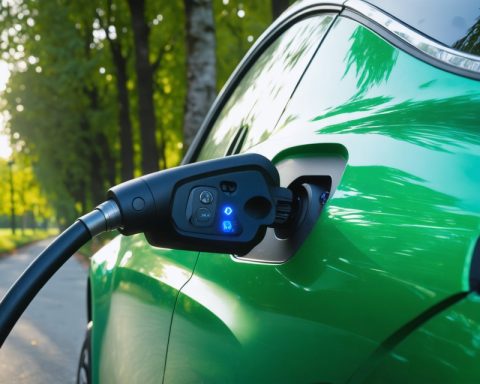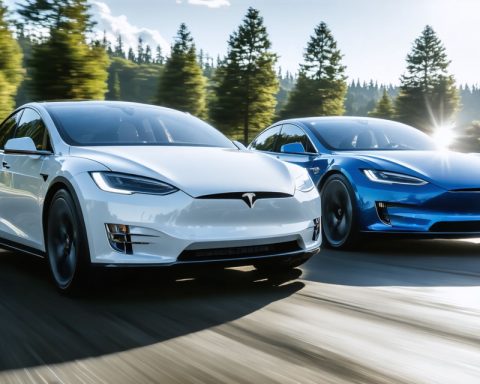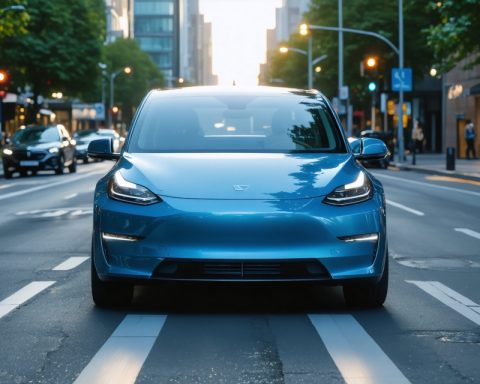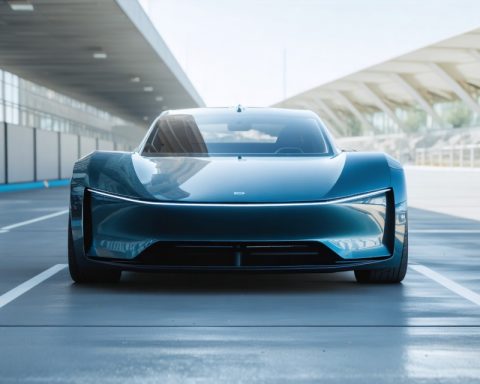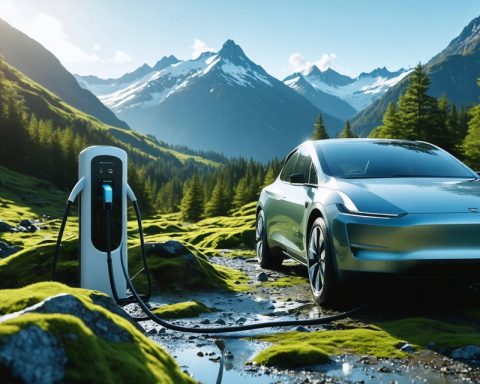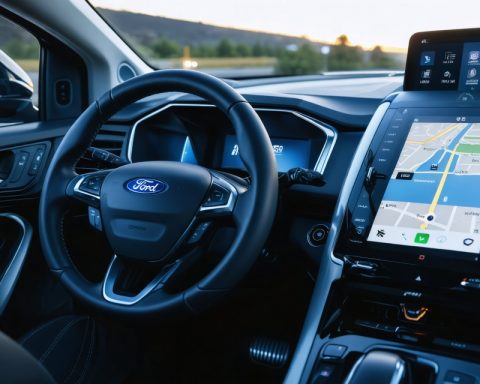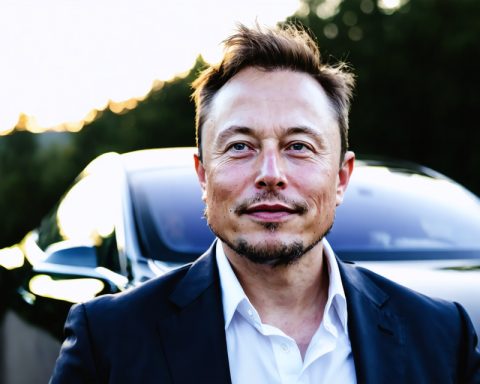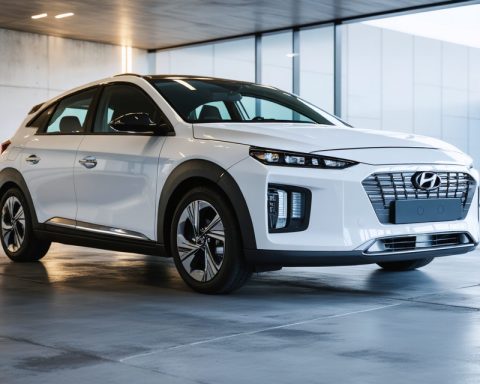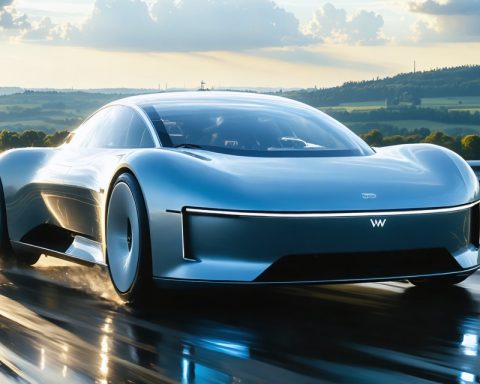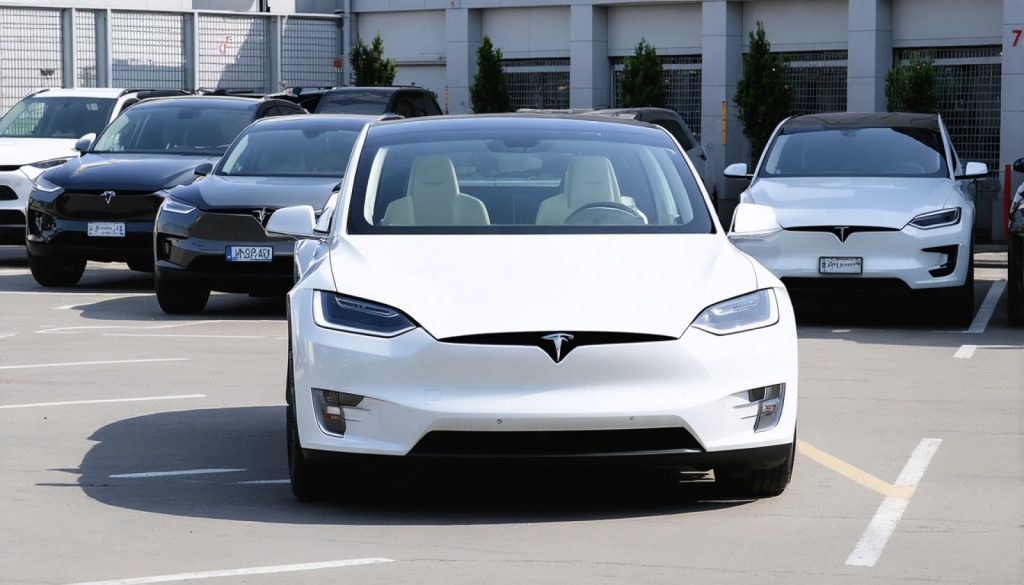- Yale Dong’s experience with Tesla’s Full Self-Driving (FSD) in Shanghai highlights the limitations of the technology in complex local traffic environments.
- Local Chinese EV manufacturers like Xpeng and BYD are overtaking Tesla with advanced technology and strategic innovations in the domestic market.
- Innovations in Chinese EVs, such as BYD’s diverse offerings and Huawei’s tech features, emphasize the integration of practicality and futuristic design.
- Autonomous driving is a key competitive domain, with companies like BYD now embracing it despite initial skepticism.
- Tesla faces challenges in China and must recalibrate its strategy to align with local cultural demands and advance its FSD technology.
- The evolving automotive landscape in China underscores the importance of relentless innovation and local adaptation for global success.
The vibrant streets of Shanghai recently witnessed a striking automotive irony. Yale Dong, cruising his Tesla Model 3 through the labyrinthine lanes, found himself wrestling with expectations and reality of Tesla’s much-touted Full Self-Driving (FSD) system. This experience echoed a broader narrative unfolding across China’s bustling electric vehicle (EV) landscape, where local champions are swiftly overshadowing the global titan.
Dong’s Model 3, fresh from Tesla’s illustrious lineup, stumbled on the eclectic intricacies of Shanghai’s traffic. Its attempts to decode lane markings and traffic signals seemed as foreign as a traveler grappling with an unfamiliar language. The comparison was stark when Dong reflected on his experience with Xpeng’s P7, an understated star on China’s auto stage, whose Navigation Guided Pilot danced effortlessly through identical paths without missing a beat.
Tesla’s once-unquestioned dominance in China’s EV market faces a new reality. From the resplendent cityscapes to the farthest outreaches of China’s dynamic hinterlands, local manufacturers like Xpeng and BYD are accelerating past it with advanced technology and strategic ingenuity. BYD, a national behemoth, has left Tesla trailing in its dust, outpacing production and sales with a suite of vehicles that are not just functional but enriched with delightful innovations.
From the Lingyuan with its roof-mounted drone to Huawei’s sophisticated gesture-sensing doors, the innovations in Chinese EVs are both grounding and soaring, combining practicality with futuristic flair. These vehicles are not just about moving from point A to B; they are about transforming the journey itself, making every ride a smarter leap towards a connected tomorrow.
Amidst this technological renaissance, autonomous driving remains the crown jewel, almost an obligation, as brands race to out-innovate each other. Even stalwarts like BYD’s founder, Wang Chuangfu, who once dismissed self-driving advancements as baseless, have pivoted. His company’s strategic U-turn to embrace and implement autonomous features across 21 models marks a deeper recognition of the technology’s inevitability.
For Tesla, a pioneer in electric mobility, this competition is a clarion call. To maintain its pioneering spirit amidst these new realities, Tesla must recalibrate its approach. This means not just refining its Full Self-Driving technology but also resonating with the local nuances and demands of the Chinese market, which values cultural synchronicity as much as cutting-edge technology.
The roads of Shanghai tell a vibrant and ever-evolving story, one where Tesla, amidst its present challenges, is but a player in a rapidly changing tableau. The key takeaway for the global auto landscape? Innovate relentlessly, adapt locally, and never underestimate the power of a market as dynamic and vast as China’s.
Why China is Winning the EV Race: Tesla’s Struggle in a Shifting Market
A Shifting EV Landscape in China
Tesla, despite its pioneering spirit and global recognition, faces stiff competition in China, the largest EV market in the world. This narrative unfolds in the vibrant streets of Shanghai, where Tesla’s Full Self-Driving (FSD) system is perceived to be faltering against local competitors such as Xpeng and BYD. These companies, utilizing advanced technology and market strategies, are eroding Tesla’s dominance.
More Facts about China’s EV Market
1. Rapid Innovation: Chinese EV manufacturers are rapidly deploying new technologies. Companies like Xpeng have introduced Navigation Guided Pilot, which showcases superior performance in complex urban environments like Shanghai compared to Tesla’s FSD.
2. Government Support: China’s government actively supports the EV industry with subsidies, promoting local brands. Initiatives include tax exemptions and generous subsidies for both manufacturers and consumers [Bloomberg](https://www.bloomberg.com).
3. Localized Production: Fellow rivals have built massive, native production facilities that help reduce costs and improve supply chain efficiency. BYD, for instance, has vertically integrated its supply chain, minimizing reliance on foreign companies.
4. Technological Edge: Chinese EVs offer cutting-edge features such as roof-mounted drones and gesture-control technologies developed by Huawei and incorporated into other brands’ vehicle models, making them more appealing to tech-savvy consumers.
5. Cultural Resonance: Local manufacturers understand and cater to the Chinese consumer’s preferences better, incorporating cultural elements into design and marketing strategies.
How-To Steps & Life Hacks
– Choosing the Right EV: Assess the driving conditions in your region. Urban areas with heavy traffic may benefit from more advanced navigation systems like those from Xpeng.
– Maximizing EV Features: Learn all features of your EV (e.g., gesture controls, autonomous capabilities) through online resources or in-app tutorials provided by manufacturers to utilize them fully.
– Staying Updated: Regularly update your vehicle’s software to ensure optimal performance and access to the latest enhancements.
Market Forecasts & Industry Trends
The Chinese EV market will likely continue to grow, with expectations to see consistent innovation in autonomous technology and smart features. By 2030, China is expected to have around 57% of passenger vehicle sales being electric, largely driven by local brands [International Energy Agency](https://www.iea.org).
Controversies & Limitations
While promising, current autonomous driving technologies, including Tesla’s FSD, have limitations and require human oversight. There are significant challenges in developing systems that can reliably navigate the complexity of urban environments.
Insights & Predictions
Tesla must innovate and localize to retain its competitive edge in China. Collaborations with local tech firms, customizing vehicles to fit local tastes, and enhancing its software to handle intricate local road conditions are potential strategies.
Actionable Recommendations
– For consumers: Test several EV brands and functionalities firsthand before purchasing to find the best fit for your lifestyle.
– For Tesla: Investing in R&D for better software refinement that caters to local driving conditions is crucial. Equally important is establishing stronger local partnerships for cultural alignment.
Related Links
– BYD
– XPeng Motors
– Tesla
As the EV market in China continues to evolve, today’s leaders must remain vigilant, innovate constantly, and adapt to local preferences to thrive in this competitive landscape.

